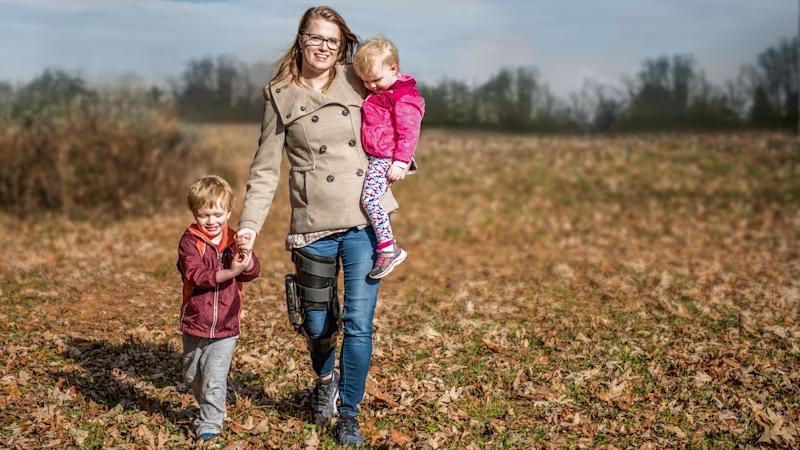Ligament instability in the knee
Therapy for ligament instability in the knee depends on the cause and degree of severity. Physiotherapy and stabilising orthoses can help alleviate pain and discomfort.
Causes, symptoms and treatment
The knee joint includes various ligaments. They stabilise the joint in conjunction with muscles that encompass the joint. A corresponding stability of the ligaments is a prerequisite for proper joint mobility and stabilisation.
Congenital or acquired factors can cause ligament weakness (laxity). This commonly results in instability of the joints. A torn ligament can even cause a complete loss of stability in a joint.
Ottobock supports and orthoses

Causes
The causes of knee instability can include congenital or acquired ligament weakness with or without the involvement of other, stabilising structures (for example, the joint capsule, articular cartilage, menisci and muscular structures). This can result in considerable instability in the knee joint.
In general, the form of knee instability is defined by the number of affected ligament structures. The more ligaments are affected, the more unstable the knee joint will be. When the cruciate ligaments are affected, the resulting instabilities often tend towards an increased anterior and posterior displacement range for the lower leg. The cause of more complex knee instability often lies in a combination of affected structures, for example, laxity of the interior cruciate ligaments, the collateral ligaments, the flaccid knee joint capsules and/or damage to the menisci.
Symptoms
Knee instability can cause a feeling of instability, actual instability, pain and irritation. Over the long term, this is often followed by arthrosis, or more rapid degeneration of the articular cartilage in the joint. Initially, instability may be expressed by uncertainty while walking or by pain when more weight is placed on the joint. Clinical tests can confirm or rule out knee instability.
Diagnosis
When knee instability is confirmed using clinical test procedures, further examinations often follow if there are painful instabilities with or without movement limitations. These include leg length comparison measurements, examining the pelvic position with joint-specific investigations and in part imaging procedures such as X-rays and MRT.
Therapy
The therapy depends on the cause and degree of severity. It may be conservative, that is with no operation, and/or surgical. In the case of conservative therapy, treatment focuses on physiotherapy and stabilising orthoses.
Back to everyday activities: three steps to an Ottobock orthosis
- Here you’ll find an overview of all the orthoses and supports that could potentially help you. Take the list with you to your next doctor’s appointment.
- Talk to your doctor about which orthosis is best suited to your symptoms and condition. Your doctor can then write you a prescription for the appropriate orthosis.
- Take your prescription to a medical supply company. They’ll give you your new orthosis and adjust it to fit your exact body measurements.
